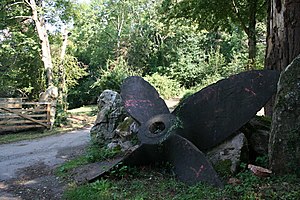Persier was a 5,382 GRT cargo ship which was built in 1918 as War Buffalo for the British Shipping Controller. In 1919, she was sold to Belgium and renamed Persier. Between 1934 and 1941 she also held a passenger certificate. She was driven ashore on the Icelandic coast in a storm in February 1941 which put her out of action for two years. Returned to service in February 1943, she served until 11 February 1945, when she was torpedoed and sunk by U-1017 with the loss of 20 crew.
Empire Antelope was a 4,782-ton cargo ship which was built as Ophis in 1919. She was renamed Bangu in 1928. In 1941 she was renamed Empire Antelope. She was sunk by the German submarine U-402 on 2 November 1942.
Empire Barracuda was a 4,972 GRT cargo ship which was built in 1918 for the United States Shipping Board (USSB) as Sacandaga. She was sold to American Diamond Lines in 1932 and renamed Black Heron. In 1941 she passed to the Ministry of War Transport (MoWT) and was renamed Empire Barracuda. She was torpedoed on 15 December 1942 and sunk by U-77.
British Corporal was a 6,972 GRT tanker that was built in 1922 by Palmers Shipbuilding and Iron Company, Jarrow, Northumberland, United Kingdom. She was built for the British Tanker Company.
Noemijulia was a 2,489 GRT cargo ship built in 1895 as Barlby by Sir R Ropner & Sons Ltd, Stockton-on-Tees, County Durham, England, for their own use. She was sold to Greece in 1926 and renamed Noemi. In 1930, she was sold to a British company and renamed Noemijulia. Questions about the manner of her operation were raised in the British Parliament in 1935, and she was attacked by Spanish Nationalist aircraft in 1937 off Cape de Creus.
SS Prinz Adalbert was a twin-screw cargo liner that was launched in Germany in 1902 for Hamburg America Line (HAPAG). In 1914 the United Kingdom Admiralty siezed her and renamed her Prince. In 1916 she was renamed Princetown. On 1917 she was transferred to the Compagnie de Navigation Sud-Atlantique and renamed Alesia. Later in 1917 a U-boat sank her.

SS Athenia was the first Donaldson Line ship of that name to be torpedoed and sunk off Inishtrahull, by a German submarine (SM U-53) in 1917; the later SS Athenia, was similarly attacked in 1939.

